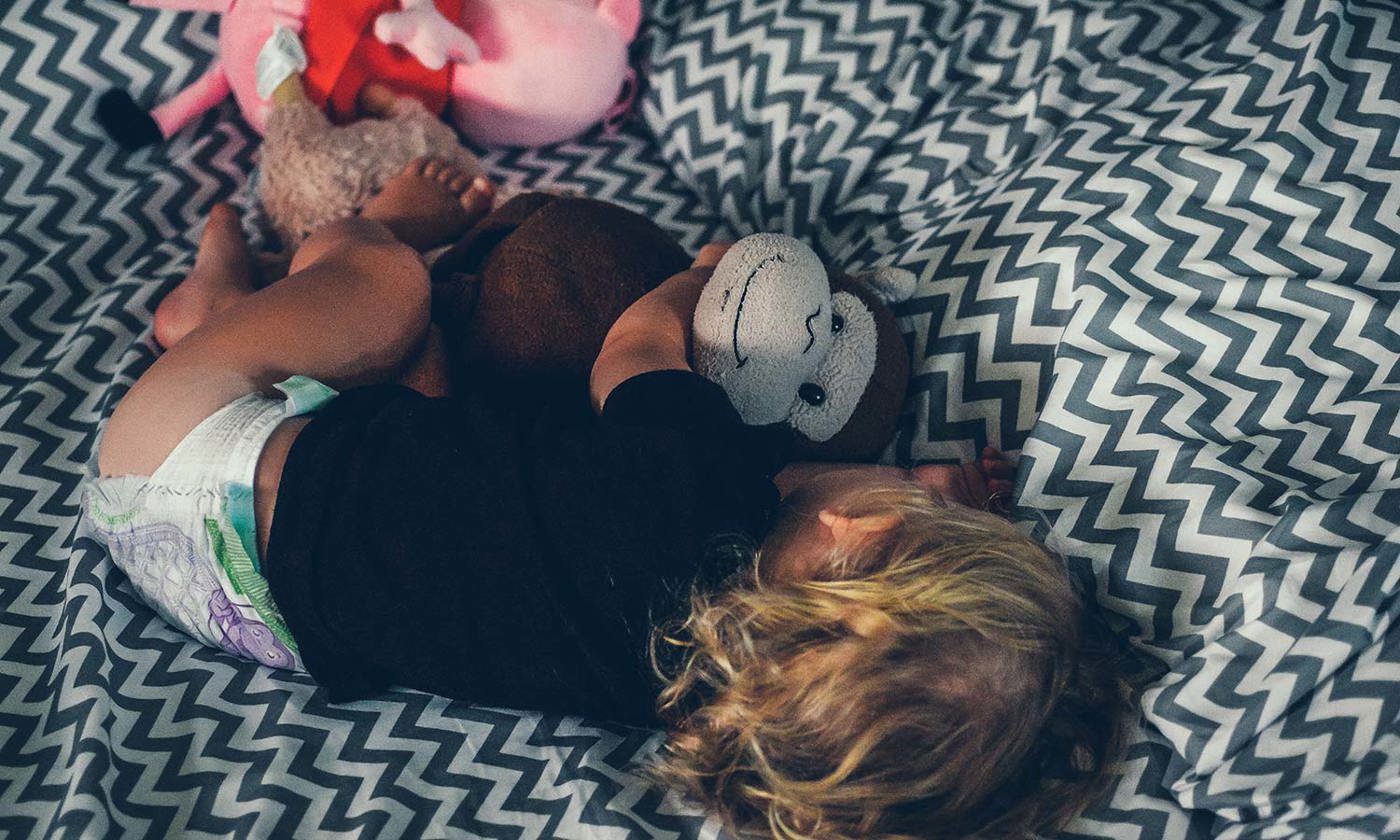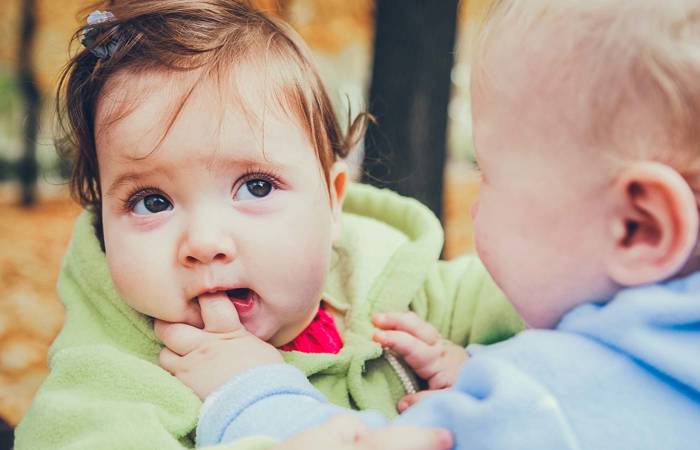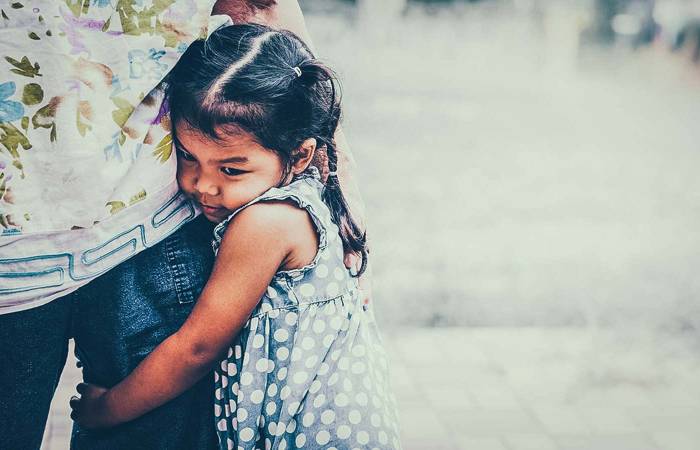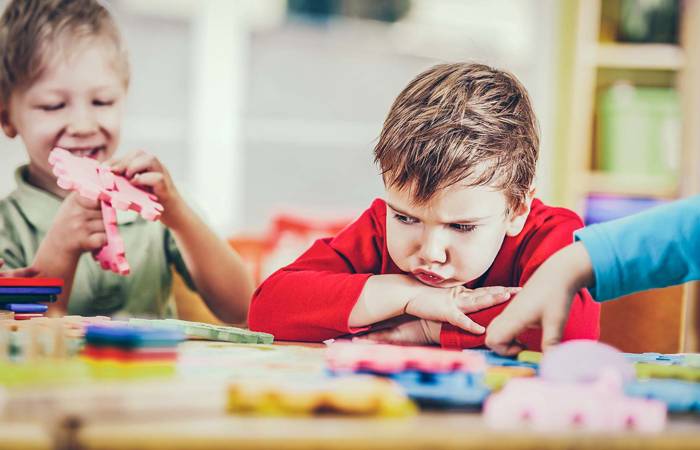Like what you see?
Sign up to receive more free parenting advice.
Thank you for subscribing to our newsletter!
Child Development

Credit: iStock.com/Lisa5201
They are images most parents can connect to: a soft animal toy so loved its fur has become ragged; a doll that has been obviously stitched together in an effort to save an arm, a leg or an eye; or a corner of a blanket that has been sucked so often it will never return to its original colour.
While they are formally known as transitional objects, our children’s favourite toys are loved for so long and so hard that they achieve much more than ‘object’ status: they almost become honorary family members.
But why do kids love them so much? Why is one toy (and not necessarily the toy with the greatest ‘wow factor’) often the root of so much comfort for a child?
Professor Frank Oberklaid, AM, Director of The Centre for Community Child Health at the Royal Children’s Hospital in Melbourne, and a Co-Research Group Leader at the Murdoch Children’s Research Institute, is an internationally recognised researcher, author, lecturer and consultant who has written two books and over 200 scientific publications. He says children’s love for these types of objects is a side effect of their broader developmental needs.
“From when kids first become mobile and crawl, they rely absolutely on their parents setting boundaries for them…they need that predictability,” he says.
This predictability extends beyond people and spaces to their favourite toys, dolls and objects.
“They get used to the one thing. In the first instance it becomes a transitional object when they are separating from their parents, for example, when they are going to bed. But it very often becomes a companion: somebody to talk to, to go to sleep with, to eat with and so on,” Professor Oberklaid says.
While there’s no hard data on what percentage of children get attached to an object during their childhood, Professor Oberklaid says that anecdotally, it’s something that the majority of children do.
“We think it’s perfectly normal to do that,” he says.
Look beyond the behaviour, and see if there’s some other cause of insecurity. Is the child anxious for some other reason? If there’s nothing apparent, I’d normalise it. You never see a man or woman taking a transitional object on their honeymoon do you? At some stage they are going to grow out of it.Professor Frank Oberklaid AM
There is no 'normal'
Professor Oberklaid is a big believer that there is no one way for the phenomena to look.
“We see eight-year-olds still with a bunny they had when they were twelve months old, and other children for whom the choice of object has changed over time. What I try to do is normalise all of that behaviour,” he says.
“Every kid is a little different. We should be tuned into those individual differences. Some kids take two or three things to bed, some kids have a favourite thing.
“Some kids evolve from Object A to Object B, others don’t. They are all perfectly normal.”
Nor do children grow out of the habit at a particular time.
“Child development would generally say that after a certain period, which will vary between individual kids, they won’t need the object. But then, on the other hand, some older kids won’t go to bed without a light on, or with music,” Professor Oberklaid says, explaining that putting a timeframe on when kids “should” loosen their attachment to their favourite object is the wrong approach.
If parents are really worried that an older child is too attached to their favourite object, Professor Oberklaid says the best answer is to delve deeper.
“Look beyond the behaviour, and see if there’s some other cause of insecurity. Is the child anxious for some other reason? If there’s nothing apparent, I’d normalise it,” he says.
“You never see a man or woman taking a transitional object on their honeymoon do you? At some stage they are going to grow out of it."
Professor Oberklaid believes there’s more damage to be done by creating an expectation of what age it’s “normal” to want to keep their special object close.
“The age they stop using these objects varies according to the child, the family situation, the child’s temperament, experience. I’d hate to start setting ages and saying, ‘Beyond this it is abnormal’,” he says.
There is one challenge for parents, however. The attachment to a favourite toy is so real that, if it’s lost, the loss is also real.
“It can be really traumatic for them. It’s like any attachment: [as adults] we get attached to an animal that passes on. Kids have that same powerful attachment. Even if they are two or three or four they become genuinely distressed about it. That can become very challenging for parents,” he says.
The grieving process
Professor Oberklaid says children who lose their favourite toy go through a grieving process, and as parents, the job is to help them through it.
“It’s real loss and real grief,” he says.
The ease at which parents can get them used to something new depends on the child’s temperament.
“Some are more easily distracted, it really depends on the characteristics of the child,” Professor Oberklaid says.
When the object is back in play, Professor Oberklaid says it’s reasonable to treat it differently to other toys, like those at childcare or playgroup which we’d expect children to learn how to share.
“Parents need to be sensitive. There’s a difference between sharing their transitional object that they are attached to and sharing toys that come and go and they are playing with. I’d say to parents to not have an expectation for them to share their primary attachment object,” he says.
As for taking the toy to early learning and care, there’s no right or wrong.
“Parents need to make that decision based on their instinct. For some kids the thought of separation from something at any time is so traumatic that by all means let them take it. For others, you can reason with them and tell them Teddy will be in their room when they get home,” Professor Oberklaid says.
While the above might involve some decision making by parents, there are two areas where the answer, according to Professor Oberklaid, is simple.
First, don’t worry about germs on your child’s favourite toy: this will build up their immunity so don’t obsessively try put it through the wash.
Second, when it comes to worrying about all this: don’t. It’s all normal.







